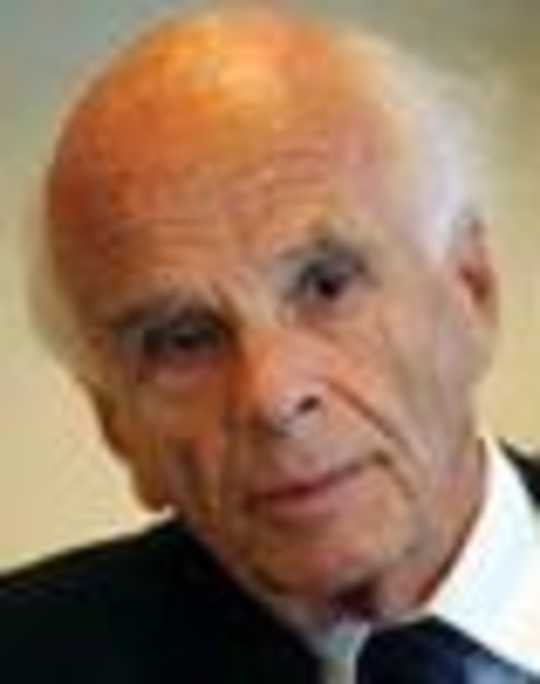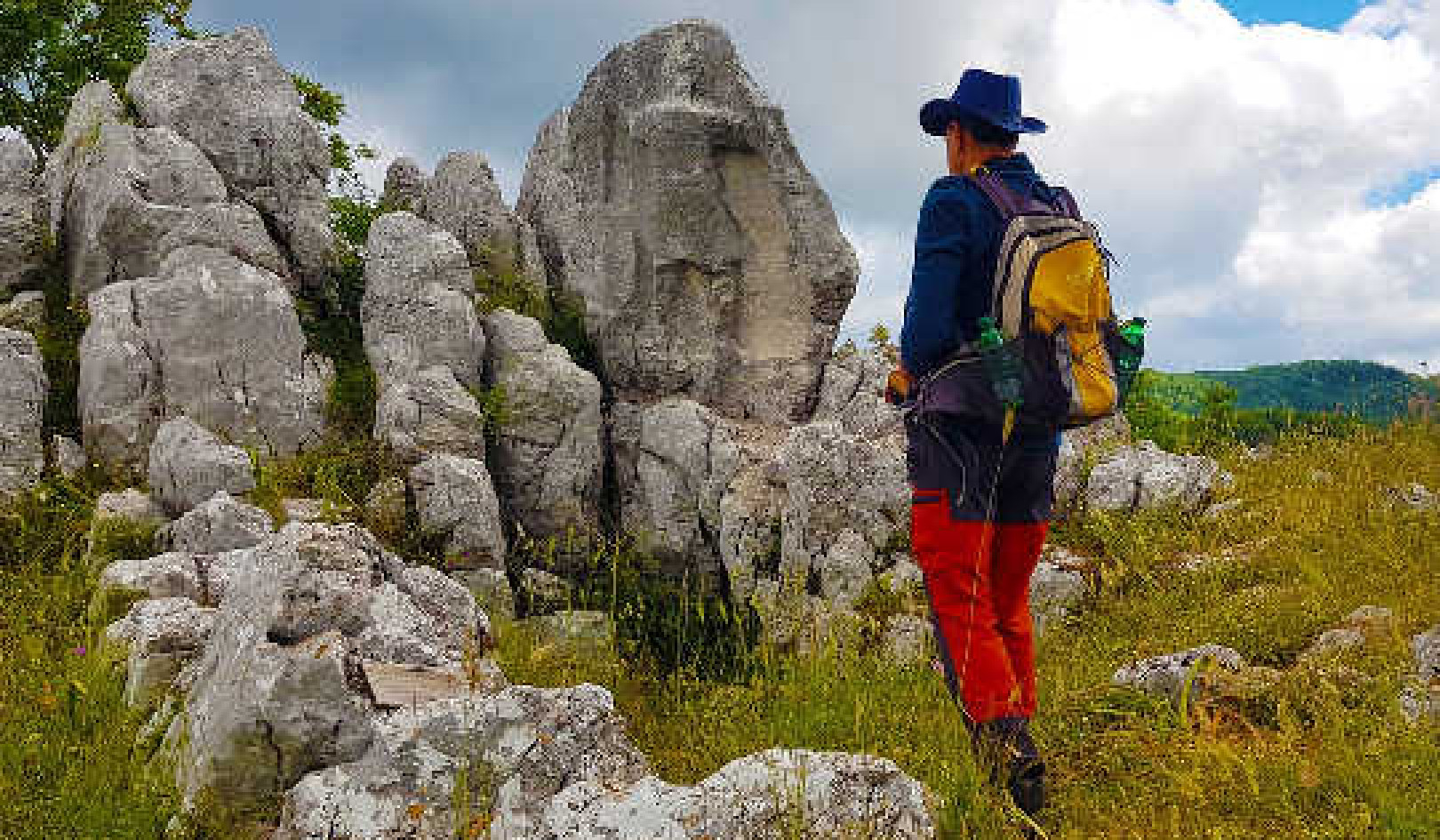
Image by Gerhard Lipold
This article, written by Deepak Chopra, is taken from the Foreword of Ervin Laszlo's book: Reconnecting To The Source.
ERVIN LASZLO was motivated to write this book out of an urgent need. He calls it the need to reconnect to our source, a proposition that leads us to the discussion of the domains of space, time, matter, and energy. This is where science locates the physical source of every thing, including the universe and every object in it.
But the scientific model lacks a human dimension, which is what Laszlo wants to restore. It is an aim that has met with scientific resistance—usually very heated resistance—for a long time, creating a wall that separates the physical world “out there” from the subjective world “in here.”
Science and "Objective" Facts
To the vast majority of working scientists, there’s no valid reason for breaking down the wall. They regard it as a matter of vital importance that science should deal in objective facts, data, measurement, and experiments. So, Einstein made history with the general theory of relativity, without regard for how he personally felt about his theory, just as Newton’s theories about gravity and the mechanics of bodies in motion were of paramount importance, not his personal adherence to a fundamentalist strain of Christianity (the fact that Newton earnestly toiled to devise a timeline for Earth that began with the creation story in the book of Genesis would be a quirk of personality, not a scientific enterprise).
Science is the most successful model of reality in human history, and holding the latest iPhone in your hand or using the GPS in your car or reading about the Hubble telescope reinforces the claim that eventually the scientific model will explain every thing. But models, no matter how successful, have a striking flaw. They are right about what they include and wrong about what they exclude. By shutting subjective experience out of the prevailing scientific model, we find ourselves in ignorance about what is actually happening in the human mind.
Reconnecting to the Source of the Subjective World
There have been calls to reconnect to the source of the subjective world. In every case, it was the troubling ignorance about the human mind that motivated a few outstanding thinkers to try to bring down the Chinese wall dividing the physical from the mental. A radical attempt was voiced when the great quantum pioneer Max Planck, the German physicist who actually named the quantum, gave an interview to The Observer newspaper in London in 1931.
In that interview, Planck said, “I regard consciousness as fundamental. I regard matter as derivative from consciousness. We cannot get behind consciousness. Every thing that we talk about, every thing that we regard as existing, postulates consciousness.” In other words, consciousness is somehow the source of the physical universe.
Planck was not alone in believing this; most of the great quantum pioneers (with the notable exclusion of Einstein, a stubborn resister of quantum theory) held the belief that without the participation of a human observer, physical reality would not exist in its present form. Or to simplify things further, we live in a “participatory universe,” a phrase coined by a great midcentury American physicist, John Archibald Wheeler.
If these insights come as a surprise, it’s no wonder, because physics, as practiced by everyday working physicists, ignored what Planck, Wheeler, and a host of other illustrious names were claiming.
We Are In the Arms of a Paradox
We wound up in the arms of a paradox. Every physicist accepts that quantum mechanics is the most successful scientific theory of all time, and quantum theory effectively demolished the commonsense notion that solid physical objects exist as tangible “ things.”
Their thingness vanishes once you enter the quantum domain, where all of reality can be reduced to ripples in the quantum field—these excitations in the gravity field, the electron field, and the quark field are more real than matter, which is just one mode of quantum excitations.
The paradox arises from the same physicists who refuse to believe that consciousness interacts with the quantum field, shaping and governing its excitations. Yet the very theorists who discovered the quantum field held that consciousness must be part of it, not only to account for a participatory universe but to correct a huge mistake.
That huge mistake is the belief that subjectivity can be excluded from the work of science. Leaving out half of existence—the mental half—seems absurd at first glance. After all, the work of science begins “in here,” with mental activity being generated and perceived by a human being. What could be more subjective?
Ervin Laszlo plunges us into this paradox, with the aim of correcting the gaping mistake in the scientific model. He argues that reality must be viewed as a whole—and a growing number of physicists, particularly among the younger generation, agree.
Wholeness Dominates Nature, Including Human Nature
There are not two regions of existence, mental and physical, separated by nature. Instead, the division of mind “in here” and matter “out there” is a human construct. It can be shown, as this book does very convincingly, that wholeness dominates nature, including human nature. There is only one reality, and the task of science is to describe how it works.
Yet at another level, every scientific theory, including the one Laszlo proposes, must pass the “So what?” test. It must be relevant to everyday life.
The part of quantum theory that led to the transistor’s “So what?” test passes, as does the general theory of relativity, because it is needed to accurately calibrate the satellites that send GPS signals back to Earth. But other aspects of quantum mechanics and general relativity do not pass the test, remaining in the obscure realm of mathematics that is the language of advanced physics. No less a figure than Stephen Hawking came to the conclusion near the end of his life that theories in physics may no longer match reality, having journeyed into a realm of abstraction that will never be validated by physical evidence.
The prospect of a universe alienated from human experience disturbed Hawking, and it disturbs Laszlo even more. The radical claims of Planck on behalf of consciousness would make the universe more human, as would Wheeler’s notion of a participatory universe. The opposite is true of models that depend entirely on advanced mathematics, which would totally divorce human experience from physics except for the rational mind that can comprehend advanced mathematics.
Healing The Rupture: "Only Connect!"
In Laszlo’s view, the only way to heal this rupture is to change our paradigm of reality, accepting that wholeness is the starting point for reality. I won’t preempt his arguments for this paradigm shift, as it has come to be called for the last forty years or so. But I am reminded of the famous English novelist E. M. Forster, who coined a phrase in his novel Howard’s End: “Only connect! . . . Only connect the prose and the passion, and both will be exalted, and human love will be seen at its height.” For Forster, who lived through both cataclysmic world wars, “only connect” was the only possible remedy for the trauma created not just by war, but by the absence of love and the rise of machines in modern culture.
Laszlo holds the same concern and sees the same remedy. He might reword “only connect” to “only reconnect,” which acknowledges that a small band of sages, seers, teachers, and philosophers, Eastern and Western, already understood that the source of reality is consciousness.
Add to this motley crew of outsiders the artists and poets who espoused beauty, love, and creativity as the highest human attainments. There is only one crucial choice, in Laszlo’s view, that can heal human suffering, and in the process can heal all suffering on the planet.
The choice to “only connect” faces each of us every day. The great value of this book is not just its impassioned call to improve everyday life, or its argument for seeing reality as it really is. Both aims are very important, but overriding them is a revolution in what it means to be human. On that basis, Laszlo has hit upon the ultimate salvation of everyone on the planet in every generation for whom being human is the prime reason for existence.
Copyright 2020 by Ervin Laszlo. All Rights Reserved.
Foreword Copyright 2020 by Deepak Chopra.
Reprinted with permission, from Reconnecting to the Source.
Publisher: St. Martin's Essentials,
an imprint of St Martin's Publishing Group
Article Source
Reconnecting to the Source: The New Science of Spiritual Experience
by Ervin Laszlo
 This revolutionary and powerful book will challenge you to reconsider the boundaries of our own experience and change how we look at the world around us. It is a unique, never before available resource for people who want to know how they can consciously align with the forces and “attractors” that governs the universe, and brought us, living, conscious people on the scene in the great processes of evolution that unfold here on Earth.
This revolutionary and powerful book will challenge you to reconsider the boundaries of our own experience and change how we look at the world around us. It is a unique, never before available resource for people who want to know how they can consciously align with the forces and “attractors” that governs the universe, and brought us, living, conscious people on the scene in the great processes of evolution that unfold here on Earth.
Click here for more info and/or to order this paperback book. Also available as a Kindle edition, an Audiobook and an Audio CD
About the Authors
 Ervin Laszlo is a philosopher and systems scientist. Twice nominated for the Nobel Peace Prize, he has published more than 75 books and over 400 articles and research papers. The subject of the one-hour PBS special Life of a Modern-Day Genius, Laszlo is the founder and president of the international think tank the Club of Budapest and of the prestigious Laszlo Institute of New Paradigm Research. He is the author of Reconnecting to the Source (St. Martin’s Press, New York, March 2020).
Ervin Laszlo is a philosopher and systems scientist. Twice nominated for the Nobel Peace Prize, he has published more than 75 books and over 400 articles and research papers. The subject of the one-hour PBS special Life of a Modern-Day Genius, Laszlo is the founder and president of the international think tank the Club of Budapest and of the prestigious Laszlo Institute of New Paradigm Research. He is the author of Reconnecting to the Source (St. Martin’s Press, New York, March 2020).
 Deepak Chopra is a well-known author and alternative-medicine advocate. His books and videos have made him one of the best-known figures in alternative medicine. He co-founded the Chopra Center for Wellbeing.
Deepak Chopra is a well-known author and alternative-medicine advocate. His books and videos have made him one of the best-known figures in alternative medicine. He co-founded the Chopra Center for Wellbeing.





























